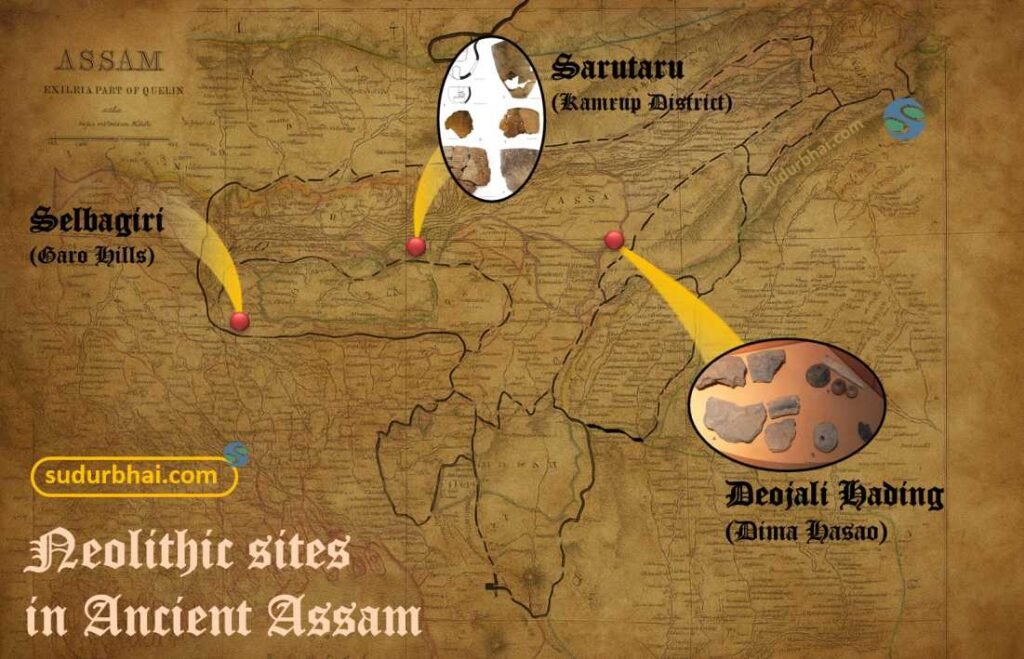Prehistoric Assam
Paleolithic Cultures
🔸 Sites:
Rongram Valley (Garo Hills):
Belongs to the Middle Pleistocene period (781,000–126,000 years ago).
Known for handaxe-cleaver tools showing similarities with the Abbevillio-Acheulean culture.
Daphabum (Lohit District, Arunachal Pradesh):
Tools made of metamorphic rock, signifying early human activity.
Khangkhui (Ukhrul, Manipur):
A cave-based site dating to the Late Pleistocene, showing advanced Paleolithic occupation.

🔸 Tools and Characteristics:
Tools made of stone, particularly handaxes and cleavers.
Designed for hunting and food gathering.
Lack of human skeletal remains in Assam due to climatic and soil conditions, which are not favorable for preservation.
Microlithic Cultures
🔸 Tools and Settlement Patterns:
Found between neolithic layers and virgin soil in Rongram Valley.
Microliths made from dolerite, unlike other Indian regions.
Evidence of crude handmade pottery, indicating hunter-gatherer lifestyle.
Populations were likely semi-nomadic, living in temporary shelters.
Neolithic Cultures
🔸 Important Sites:
Daojali Hading (Dima Hasao)
Sarutaru (Kamrup District)
Selbagiri (Garo Hills)

🔸 Tools, Artifacts, and Cultivation Practices:
Tools include ground and polished stone tools like celts, hatchets, and grooved hammer stones.
Practiced shifting cultivation (jhum)—still in use by some tribal communities.
Associated with Hoabinhian culture, showing connections to Southeast Asian cultures.
Neolithic habitation mostly on hills and highlands, likely due to seasonal flooding in the plains.
🔸 Important Explorers and Findings:
W. Penny (Biswanath): Discovered large collections of Neolithic tools.
J.H. Hutton, J.P. Mills, K.L. Barua, and others: Collected and classified stone tools.
Tools stored in the Pitt Rivers Museum, Oxford—largest number from Biswanath.
J.H. Hutton classified tools into:
Triangular
Rectangular
Shouldered type
A.H. Dani divided Neolithic Assam into six archaeological zones:
Cachar Hills
Sadiya Frontier
Naga Hills
Khasi Hills
Garo Hills
Brahmaputra Valley
Megalithic Cultures
🔸 Khasi and Naga Practices:
Rich Megalithic traditions among Khasi and Naga tribes, some of which continue till today.
Use of stone monuments for burial, ancestor worship, and ceremonial purposes.
🔸 Cultural and Religious Implications:
These practices were precursors to fertility cults, Shaktism, and Vajrayana Buddhism.
Shows a cultural affinity with Southeast Asia rather than mainland India.
Despite the absence of a formal Metal Age, the Megalithic phase fills that cultural gap in Assam.
